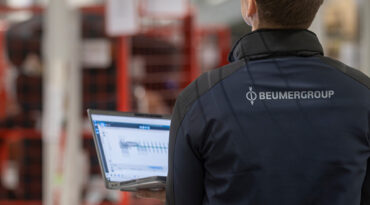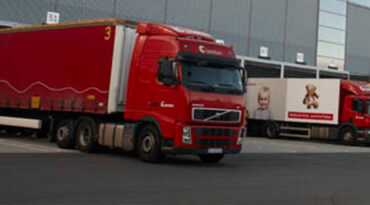Finding a niche in the Last Mile
The startups, contends the CEP industry, have many advantages:
- They are innovative, adaptable to change, more open to partnerships, team-spirited and flexible, making them better equipped to provide bespoke services with a personal touch
- Use of gig workers instead of full-time, unionised employees – quite the headstart given that 80 percent of Last Mile costs are labour-related
- Lower costs in general – for example, no network maintenance or ownership of legacy systems and platforms to finance, and fewer overheads
- Focus on The Last Mile, chiefly in urban areas. The handling, sortation and linehaul are the responsibility of the retailer/marketplace – a delivery model that enables low costs.
- Financial backing – often venture capital, which enables the startups to price aggressively and invest more in technology
- Personal service: retailers and marketplaces entering The Last Mile market segment can offer a service augmenting the full recipient experience
- Greater flexibility to contend with local disruption, such as bans on diesel/petrol vehicles in city centres
Read the ‘Courier, Express & Parcel 2024 Outlook: Future-focused flexibility’ report to discover why long-established CEP operators are better advised to not get involved in a race to the bottom and look within their own operations to improve performance, cut costs and earn profits.
How to reduce both costs and carbon emissions
Profits might be the primary concern, but the carbon footprint is a close second. Almost half of all Europeans say they want deliveries to limit their carbon footprint – and the urge is particularly strong among young people.
Increasing numbers of environmentally-friendly transport options are emerging to satisfy a rising demand among end-consumers, including bicycles and robots.
And lots of alternative delivery solutions are also emerging – most particularly PUDO (Pick Up and Drop Off) points and lockers.
In a fair number of European countries, including the Nordic states, people say they are happy to walk to them to pick up their parcels from a local delivery point.
However, there are a number of concerns holding back CEP operators from embracing the PUDOs and lockers:
- According to the DHL Online Shopper Report 2022, 73 percent of Europeans want their products delivered to their doorstep – and CEP operators will always put their end-consumers’ preferences first, or risk losing them
- CEP operators will lose business if they fail to satisfy demand. Whether it’s low cost, or same or next-day delivery, CEP operators risk losing end-consumers if they fail to honour their promises.
- Relocating the delivery destination to a pickup point isn’t really a sustainable solution if trucks are still driving around city centres
- An end-consumer might drive to a delivery point, creating a larger carbon footprint than had it been delivered to their home. Online tools such as My Parcel in the UK enable the public to calculate which option is better for the environment.
Why lockers might tick all the boxes
CEP operators can service the lockers with one single delivery – a big plus for their carbon footprint. Broken down, there are four main advantages:
- Reduced delivery route – instead of following a complex route taking in multiple stops, the driver only has one destination: the lockers
- Fastest possible pickup – instead of waiting at home, customers are notified the moment their delivery reaches the lockers. There’s no danger of them being ‘not at home’
- Optimum security – the one-delivery route reduces the possibility of parcels being mixed up. Left in a secure locker, the possibility of the parcel being stolen is eliminated. Just last year, 14 percent of the US public reported having a parcel stolen from outside their home (in total, over 80 percent will make an online purchase in 2023)
- Clear chain-of-custody – the opening of the locker door completes the chain-of-custody of the parcel’s journey: from sender to recipient. The same can’t be said of mailrooms or your front porch
According to Christian Østergaard, a lead visionary at PostNord interviewed for this year’s CEP report, near-home deliveries make good sense for the industry:
“Not only do they drive down the ‘Cost of Drop’, but they offer a far more sustainable way of working, along with certainty the parcel can be delivered at the first time of asking. Since their launch by DHL 20 years ago, lockers are really taking off in the Nordics – end-consumers are happy they can pick up parcels 24/7 instead of waiting at home, and they are also thinking more sustainably.”
A load off the CEP operator’s daily grind
Another solution to fulfilling doorstep deliveries in The Last Mile is automated sequencing, a process that is busy replacing the need for drivers to manually sequence their loads.
Automated sequencing takes at least half the time of manual sequencing: 15 minutes compared to 30-60 minutes.
Based on automation initially inspired by sortation technologies used in fashion distribution, the sortation system assesses route data to release parcels in the exact order they will be delivered.
The single multi-purpose system interfaces with the route planning system and loads the vehicle back-to-front, calling on parcels in the exact order they will be delivered. This automation is made possible by the system’s dynamic storage buffer, which sorts and sequences parcels based on their ID.
Still in a development stage, it is expected automated sequencing will soon be widely implemented, saving both time and cost for the industry at large.
Download the ‘Courier, Express & Parcel 2024 Outlook: Future-focused flexibility’ report to learn how investing in Last Mile innovation can transform your business.

















